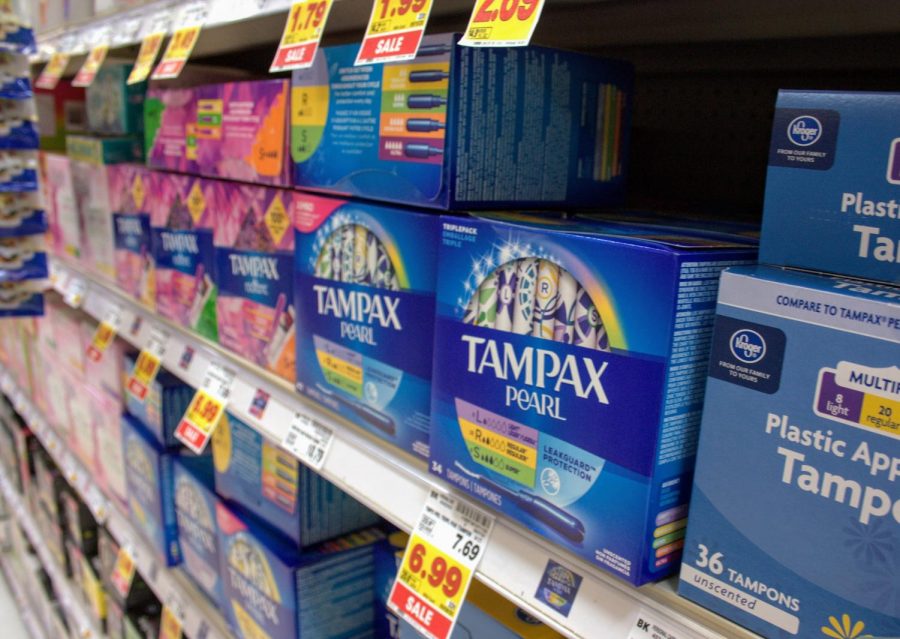Poma: Achieving Gender Equality in Utah Will Require Better Attention to Women’s Health
Improving women’s health care is essential to achieving gender equality. (Photo by Camille Rousculp | The Daily Utah Chronicle)
September 8, 2020
For the third year in a row, Utah recently ranked the worst state in the nation for women’s equality. And, sadly, most people weren’t surprised. While the announcement probably calls the gender gap in pay and leadership to mind first, it’s important to remember that gender equality spans many topics — and women’s health might be the most overlooked, especially in a state like Utah. To achieve total gender equality, we must explore different ways to address women’s health concerns. If everyone — not just women — takes the issue seriously, we can progress toward a healthier and more equitable society.
Women’s health affects everyone who has a menstrual cycle, pays the pink tax for essentials, has daughters or has a female partner. In other words, almost everyone interacts with women’s health on a daily basis. But few people seem to know much about it. You might not know, for example, that women are much more likely to be misdiagnosed than men, or that thanks to COVID-19, women are neglecting preventative health measures at even higher rates than they were before. That’s alarming, especially when public health has become of utmost importance.
Contemporary shortcomings in women’s health are centuries-old, and we still have a long way to go in terms of proper education about the subject. The fact that modern gynecology has a “founding father” and relied on the torture and abuse of Black women to reach scientific conclusions speaks volumes about the origins of women’s healthcare. But not many people know about this history, which limits our so-called modern understanding.
In Utah especially, it doesn’t help that sex education is so taboo. I had to learn about periods from a male gym teacher whose understanding of the menstrual cycle was vague at best. When the girls asked in-depth questions, he told us to “get things checked out” even though we were experiencing healthy, normal things. I lived under the impression that something was wrong with me until I began researching on my own.
Just as in my eighth grade class, many questions about women’s healthcare go unanswered or dismissed within the medical community and to the public — including questions about women’s pain, menopause and even breast cancer. The use of the pink ribbon for Breast Cancer Awareness Month often seems to be more of a corporate publicity stunt than a helpful awareness or prevention campaign. And harmful attitudes in the medical community perpetuate harmful attitudes in our communities, which make it difficult to overcome stigmas about women’s health. We need to increase access to insurance coverage and reliable information so no one misses out on potentially life-saving appointments.
Openly discussing women’s health is an important first step in raising awareness of these issues. It should become common practice to teach everyone — yes, men too — about the topic from an earlier age. And the education shouldn’t stop after middle school. We need to promote healthy perspectives into our college and adult years too. After all, our bodies continue changing as we get older — puberty is not a one-and-done process. Missing out on new information puts women of all ages at greater risk for health issues they might not know about, such as infertility or severe infections.
One reason health problems in women often go unnoticed could be their experiences at the doctor’s office. Many women feel more comfortable seeing a female physician rather than a male doctor. While most male doctors handle appointments professionally, they physically cannot fully understand what people with female anatomy undergo — and horror stories about male doctors sexually abusing their patients might deter women from seeking necessary care. Thankfully, more and more women are entering the medical field, which means more women will eventually have access to doctors of their same gender.
While this isn’t to say women should discriminate against male doctors, it’s no wonder they feel negatively toward the idea when so many misconceptions and misdiagnoses occur. Women are 50% more likely than men to be misdiagnosed after a heart attack. They are also at a higher risk of being given an improper, dangerous dosage of medicine because most sample patients for medicines were men. We need better research about how women’s bodies react to various conditions. Again, that starts with a better understanding of women’s healthcare from a younger age to avoid stereotyping on the doctors’ or patients’ ends.
While we still have many hurdles to jump before cohesive women’s health awareness can be achieved, all hope is not lost. Change starts with simply creating spaces where people feel more comfortable discussing the subject. Everyone should be able to ask questions without being laughed at and do their research without having to hide their phones away. Yes, Utah needs to do better, but doing better needs to start with all of us.








